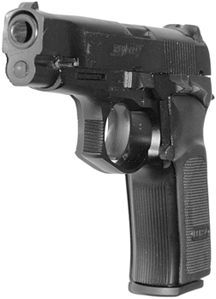
The 9mm cartridge continues to retain its immense popularity, and those with little experience with firearms take to it quite well. Those with more experience know there are better self-defense rounds, but not many will argue that you can get ammunition for a 9mm at a cost far lower than most, if not all other, centerfire handgun cartridges. The handguns that shoot it are a different story altogether. The more-costly versions can easily run well into four figures, but most decent 9mm autoloaders sell for under a grand. But we know many folks can’t justify spending even half that on a decent firearm. So how low can you go?
To find out, we chose two full-size 9mm pistols that might appeal to the buyer looking for a bargain. The first handgun we chose was the Hi-Point C9 with a suggested retail price of $140, but commonly selling for around a C-note or even less. We found one listed at $92. Can you expect such a handgun to work, much less work well? Our second pistol was the High-Capacity Bersa Thunder 9, just recently available. It lists for $442, or less if you shop around. While not inexpensive, the Bersa has several desirable features that many higher-priced handguns don’t have, most notably its 17+1-shot capacity.
We tested these guns with Black Hills 147-grain JHP, Winchester 147-grain SXT JHP, and with Winchester 115-grain JHP ball. We shot for slow-fire accuracy at 15 yards from a solid rest, and for simulated self-defense fire with fast, controlled pairs from seven yards, using two hands. We also tried several other types of ammunition including Cor-Bon 125-grain JHP and Ultramax 115-grain lead-bullet loads for function or potential problems, but didn’t report them formally. Here’s what we found.
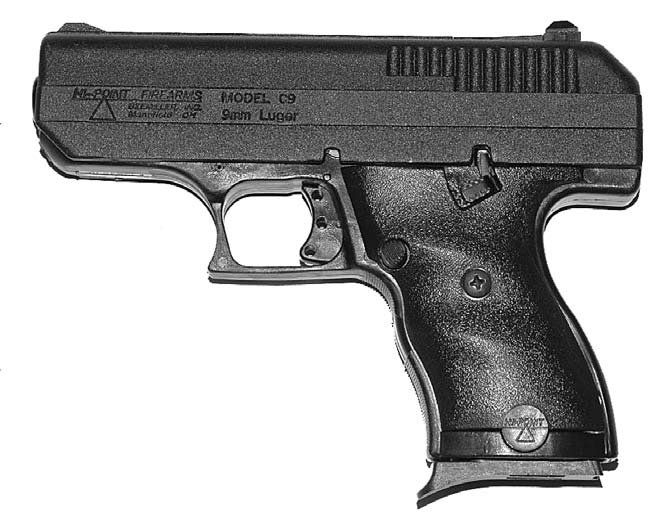
This was one of the homeliest handguns we’ve seen. To add to the insult, it was top-heavy and, to some of us, clumsy in the hand—though some shooters liked the grip a lot. Its matte-black slide was massive and heavy because there’s no barrel lockup. It’s a blow-back handgun, so all that slide weight is necessary. The big slide was coated with what looked like polymer or perhaps Teflon, but was in fact powder coat, which is an extremely durable paint-like process commonly used on faucets and other items designed to be handled a lot. We expect to see more powder-coated handguns in the future. The finish was extremely attractive and seemed to be durable as well.
The frame was made of polymer. We found the grip surfaces to be too slick, despite the serrations on the front and back straps and the molded-in, finger-position aids. The slightly grainy surface got slicker when wet. The grip panels, and thus the whole gun, could be greatly improved by more roughness or texture, we thought, without adding expense.
The safety lever was on the left side. It moved up to lock the trigger, down to fire, and it was easily controlled by right-handers. Lefties would have problems with this gun, we thought. The Hi-Point could be carried cocked and locked. We thought you’d have a hard time finding a holster, but were wrong. The company website has a link for them, and with the great popularity of this pistol, you won’t have to look hard to find a decent holster.
The gun came with one eight-round magazine with a finger extension. Ten-rounders are available, for $15. The Hi-Point is striker fired, and it could not be fired with the magazine removed. The mag button was on the left, behind the trigger guard, about where it is on a 1911-type auto. The trigger was polymer, and worked well, we thought. It broke at 7.7 pounds, about right for a DAO-type handgun, and very similar in feel to a Kahr. The sights were outstanding, we thought. There was a fully adjustable rear with two red dots, and an integral, clearly visible front that carried a yellow dot. The gun was thoroughly dehorned, with no sharp edges anywhere. Takedown was a bit different. Clear the gun, remove the magazine, and lock the slide fully rearward with the safety lever. This exposes a pin visible through the safety notch in the slide. Drive out this pin with a hammer and punch. Then let the slide go fully forward, pull it back about half an inch, pull it upward and ease it off the barrel forward. Inspection of the innards revealed simple but effective construction. Those of us who appreciate finely made firearms were not inspired, other than by the fact that this simple gun did in fact work, and work very well. Reassembly was easy.
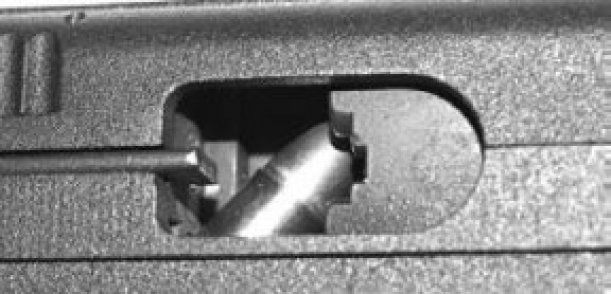
The warranty is hard to beat: “All Hi-Point Firearms carry a Lifetime, no-questions asked warranty.” So stated the company website. It also declared that if any Hi-Point firearm is ever need of service, send it to the Dayton, Ohio, address for no-charge repair, other than shipping costs. This applies to whoever owns the gun, not just the original purchaser. We don’t know of any other maker who offers such a comprehensive, simple, and clearly stated warranty. However, the instruction sheet that came with the gun declared the policy extended to only the original purchaser. A phone call to the manufacturer cleared this up. The present and future policy is in fact to extend the warranty to whomever owns the gun, not just the original purchaser, and this will be clarified in future instruction sheets that accompany the guns.
a tweak of the well-detented rear-sight elevation adjustment got us centered, and we then proceeded to hammer the dickens out of the 3-inch black, rapid-fire, with the Hi-Point. We admit this gun felt better the more we shot it, but some of us still didn’t like the slippery feel of the grip. For a quick cure, one could simply wrap the grip with the sticky black tape used on ball bats and hammer handles. To our utter amazement, our shooters could make faster and better hits with the Hi-Point than with the Bersa, shooting both guns as fast as they could keep the shots on the paper from 7 yards. It’s far easier to make good, fast hits with the Hi-Point, we found, than by fighting the very long and stiff DA/SA pulls of the otherwise very nice Bersa. Ultimate accuracy was about 3 inches, sometimes better, for five shots at 15 yards.
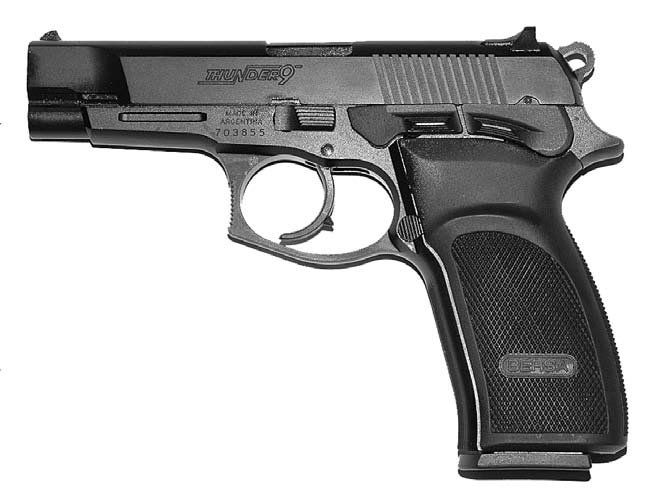
This Argentine-made pistol was big, its grip large enough to wrap around its 17-shot magazine. No small-handed person would be comfortable with it, we thought. Yet for medium to large hands, the grip was extremely comfortable. The wrap-around plastic grip panel had excellent checkering that, combined with good serrations on the front strap, gave excellent control. The color was all subdued matte black, but satin nickel finish is available for $25 more. The gun came with one mag. Spare magazines are $60 each.
The slide was steel; the frame, aluminum. Superficially, the Bersa Thunder resembled the original Hi-Power Browning, but was DA/SA. The controls were all ambidextrous, and the mag release could be reversed. We were impressed with the size and shape of the slide stop and safety, and their positive operation. Putting the safety on (up) dropped the hammer. The gun could not be carried cocked and locked. It could, however, be fired with the magazine removed. We didn’t like the very long travel of the DA trigger, which required a reasonable and smooth 11.5 pounds to operate. We noted it did lift the hammer to nearly the same position as when fully cocked, so there were no problems with DA rounds failing to fire. The SA pull took three pounds to overcome the first stage, and broke at 5.7 pounds with some definite creep.
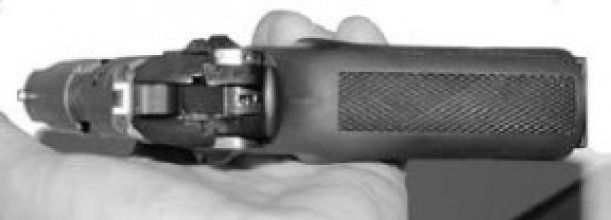
The sights were excellent, but fixed. No problem there, the gun shot close enough to where it looked. The sight picture was outstanding, with a white-outlined rear and a white-dotted front. The rear was polymer, nicely rounded for clearance drills. The huge ejection port had some sharp edges that needed to be dealt with. So did the front of the slide, we thought. Despite the huge grip, the gun was well balanced, even with a full load. Takedown was a cinch. With the gun unloaded and mag out, simply rotate the takedown lever 90 degrees so it points down, and slip the slide off the front. Restrain the slide spring and pull it away from the barrel, and then the barrel may be removed. Reassembly was just as easy, a pleasant change from some recently tested guns that required assembly pins, clever tricks, or holding your chin at just the right angle to get the gun back together.
On the range, we had lots of fun with the Bersa. It worked, and kept on working. We couldn’t fault it for a fun gun, but when we tried it with DA/SA pairs we had a hard time. The long and relatively slow DA pull was followed by the short and light SA pull and, contrary to other DA/SA pistols recently tested, like the Walther PPK, this was not an easy transition. It would take considerable practice, we thought, to become comfortable with the two trigger pulls. The Bersa was easy enough to cock with the supporting hand’s thumb, but we thought it would be a better self-defense gun if it could be carried with the hammer fully cocked and the safety on. Our very best five-shot group was with the otherwise unrecorded Cor-Bon 125-grain JHP, one inch dead center at 15 yards. The Bersa didn’t like the lead-bullet Ultramax.
Gun Tests Recommends
• Hi-Point C9 9mm, $140. Best Buy. We had a few small problems related to one brand of ammunition. In continued testing, we had a total of two failures to feed with Winchester’s SXT 147-grain ammunition, but everything else fed just fine. We tried a very loose, limp-wristed hold to see if the Hi-Point could be made to jam on request with that ammunition, but it fed and functioned just fine. Our suggestion is to test, test some more, and then do some serious testing with your chosen ammunition before you trust your life to one particular brand of ammunition in any given handgun. With Winchester’s 115-grain FMJ ammunition and with Black Hills’ 147-grain JHP, we had no problems at all, but accuracy with the Cor-Bon and with the lead-bullet Ultramax were poor. We conclude the Hi-Point is well worth owning, and judging from the rapid sales of Hi-Points at the local gun shop, we’re not alone in our high opinion of this simple, low-cost pistol.
• Bersa Thunder 9, $442. Buy It. We liked the workmanship, looks, feel, and performance of the 18-shot Bersa. If you want or need a good DA/SA nine that will shoot from dawn to dusk on one loading, this is an excellent choice, we thought. The gun looked about as good inside as it did out, and that inspired confidence. Before you buy the High Capacity Thunder 9, be sure your hands are big enough for it. If so, we think you’ll like its overall quality and ease of use and maintenance. There are a few options, including a smaller overall version with 10-shot capacity, so be sure to visit the website (www.bersafirearmsusa.com) and have a look around before you visit your dealer.
-Text and photos by Ray Ordorica from Gun Tests team field and range evaluations.






























